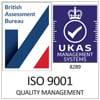By Ruth Ritzema, Marketing Director, Daxtra
Candidate experience is more than a recruiting buzzword – it’s a vital factor in attracting and retaining top talent. Recruitment is a two-way process and, while you want to attract the best talent to your organization, candidates are looking for companies that are the best fit for their skills, needs and values.
Creating a great candidate experience will allow you to attract the best applicants, convert them into successful hires, retain their skills, and benefit from word-of-mouth referrals.
In this article, we’ll look at why improving candidate experience is important, cover some common pain points in the candidate journey, offer actionable tips to improve the candidate experience and examine the changing role that technology can play.
What is Candidate Experience?
Candidate experience is how job seekers feel about an organization, based on their interactions during the recruitment process.
The candidate journey provides multiple steps: from searching for a job, reading a job posting and applying for a role to communicating during the application process, interviewing and being offered (or not being offered) a job – right through to onboarding. These interactions will affect how a candidate feels about your organization – whether you’re an employer or a recruitment or staffing agency.
Why is Improving Candidate Experience Important?
Creating a positive candidate experience is an essential part of recruiting. To hire and retain top talent, you need to attract quality candidates and ensure that they remain engaged throughout the process.
Gartner’s Voice of the Candidate Survey in May 2023 found that, of the candidates surveyed:
- 50% accepted a job offer but backed out before starting
- 47% were still open to other job offers after accepting a role
- Nearly 90% had exited a hiring process due to a mismatch in the employee value proposition (EVP)
Your employer brand is key to attracting the best talent – 75% of job seekers consider an employer’s brand before applying for a job. Improving your candidate experience will help you build a strong employer brand.
If a candidate has a great experience (whether or not they end up being hired) they're more likely to advise people in their network to apply to your organization in future. ERE’s 2023 Global Candidate Experience (CandE) Benchmark Research found that 74% of candidates were willing to share positive candidate experiences with their network. This word-of-mouth recommendation is an invaluable part of your talent acquisition strategy. And, these candidates will also look more favorably on your brand - and so are more likely to become customers or even brand advocates in future.
The benefits of improving candidate experience start at the talent attraction stage but continue far beyond. You will see improvements in:
- Time-to-Fill: your time to hire will be reduced, since your application processes will be user-friendly and your communication will reflect your company values.
- Retention: your employee retention rates will improve, since candidates will start off with a full understanding of your brand ethos, value proposition and expectations. They are therefore likely to be a better fit for your organization and will be more likely to stay with you long-term.
- Referrals: candidates will refer others in their network to join your organization, reducing the time and cost of future talent acquisition. Candidates who haven’t been hired but who’ve had a good experience on the candidate journey will also be more likely to apply for roles in the future.
- DEI: Candidates from diverse backgrounds will be more willing to apply to your organization if you have a reputation for providing a good candidate experience, respecting your applicants through their candidate journey. This will lead to a more diverse workforce and more inclusive company culture.
- Company Culture: candidates will understand your values and culture when they join your organization and will have chosen to work for you based on their knowledge of your company culture.
What are Some Common Pain Points on the Candidate Journey?
The advantages of creating a good candidate experience can be lost if candidates have a negative experience at one of the touchpoints on the candidate journey. Some common pain points include:
- Ghosting: Lack of communication is probably one of the biggest complaints from candidates in the hiring process – from submitting their resume and never receiving a response (or having to wait weeks to hear back) to attending an interview and never getting a follow up.
- Lengthy application process: If candidates have to complete too many lengthy forms, you will experience application drop-off. Candidates also complain about experiencing complicated application processes, such as having to go through multiple rounds of interviews, especially if this wasn’t clearly explained at the start of the process.
- Lack of feedback: Providing feedback to candidates, especially when they are unsuccessful, is a vital element in helping them improve their performance. Many employers fail to provide feedback, and some don’t even notify candidates when they have been unsuccessful.
If candidates experience these pain points, they may feel that they’ve wasted their time and are unlikely to apply to your organization again.
It's highly likely that they will also tell other people not to apply. It's now even easier for them to share their experience – not only with close friends and family, but also across social media and online forums. For many companies, their candidates are also their customers, so if they have a negative experience, they're more likely to take their business elsewhere and advise others to do the same.
Five Effective Strategies to Improve Candidate Experience
If you’re looking to attract the very best candidates, you don’t just want them to have a good experience – you want to wow them with a great experience, making them more likely to apply to your organization, and to accept your job offer. Here are some actionable tips to help you improve your candidate experience:
Streamline Your Application Process
Daxtra’s US Market Research Report found that 31% of candidates expected the application form to take no more than 10 minutes to complete, and most candidates will give up filling out an application form if it takes longer than 27 minutes.
To enhance your candidate journey, you should avoid:
- Long application forms with multiple fields (and pages)
- Too many assessments and rounds of interviews, especially when candidates are asked the same questions multiple times
- Delays in providing updates
- Not being clear on the decision-making process and timeline
Make sure every touchpoint in the application process is user-friendly (and mobile-friendly).
Keep application forms as short as possible, with clear questions – and ensure that you tell candidates how long it should take to complete the form before they start. This shows respect for your candidates’ time.
Be transparent about what the hiring process will look like, including how many rounds of interviews there will be and when you expect to make a decision. This will give candidates more confidence about how to operate as a company.
One of the best ways to improve your application process is to ask candidates for feedback. ERE’s 2023 Global Candidate Experience (CandE) Benchmark Research found that 67% of employers asked for feedback compared to only 40% in 2022. If you make changes to your process based on candidate feedback, check your key success metrics before and after (more on this later).
Improve Communication
Candidates have invested time and effort in applying to your organization and feel frustrated when this effort is not reciprocated. To keep them engaged, you should:
- Acknowledge that you have received their application as soon as possible (many candidates expect to hear back within 24 hours)
- Update candidates regularly on the progress of their applications, even when you don’t have anything new to share.
- Provide timely feedback after an interview and advise them on next steps.
- Inform unsuccessful candidates that they have not got the job (this time). Keep in touch with them for future roles.
- Personalize your communication, so you’re communicating with candidates in the way that works best for them. If a candidate is working in their company office, don’t call them regularly with updates. Try to avoid sending generic messages to candidates and using your own internal terminology they might not understand. Communicate from a human email address, not a generic one like careers@ or hr@.
If in doubt, communicate, and use technology to help improve your candidate engagement.
Provide a Positive Interview Experience
Make sure you’re setting your candidates and your interviewers up for success by creating a structured interview process.
Ensure that candidates know what to expect from your interviews and what they should do to prepare by providing clear instructions, including how long the interview will take, what the format will be, who they will be meeting, how to access your office and (for in-person interviews) what the dress code is. Send a calendar invitation containing the information they need.
Ensure that your interviewers also know what is expected of them and how they can provide the best experience to candidates.
Thank candidates for attending interviews and provide feedback on their performance as soon as possible afterwards. Ask them for any feedback that they might have and use it to improve your interview process in future.
Enhance Your Onboarding
The candidate journey doesn’t end when you make a job offer. Try to make the transition from candidate to employee as smooth as possible, since a positive onboarding experience will give your new hire the best possible start at your company.
If you need the candidate to complete onboarding paperwork, aim to make this digital and send it to them before they start, so that all their systems are set up ready on this first day.
Make sure candidates know in advance what is expected of them on the first day and over the first couple of weeks in the job – ideally ask their hiring manager to call them before their start date to make sure they have everything they need.
Showcase Your Employer Brand
You should use every touchpoint on the candidate journey as an opportunity to present your employer brand and prove that candidate experience is important to your organization.
Some ways to showcase your employer brand include:
- Job descriptions: write clear and concise job descriptions using simple language. Avoid jargon and a long list of requirements – include the must-have skills and experience. Be clear on what the responsibilities will be.
- Careers site: create an appealing careers site (or page) – it should be easy to find on your website and give candidates an idea of what it’s like to work for your company. Make sure it’s clear how to apply for the job and what the hiring process will be.
- Communication: get in touch with candidates as much as possible, even if you’re telling them that they have been unsuccessful.
- Being authentic: all the touchpoints on your candidate journey should reflect what it’s like to work for you. This will ensure that you attract and hire the candidates who will be the best fit for your organization. Candidates will be wary of companies that create an inauthentic experience.
It's vital to ensure that the candidate experience is aligned with your brand and company values. Does what candidates experience when they interact with your organization match how you promote yourself externally? For example, if your values state that your employees are the most important part of the business, ensure that you treat your candidates as equally important – communicating regularly and providing updates on their application. You need to ensure that this experience is consistent across all candidate touchpoints.
How Technology Can Improve Candidate Experience
There are many ways to use technology to improve candidate experience – and the options are increasing all the time.
Today’s technology can enable both greater automation and increased personalization for each stage of the candidate journey. You can:
- Use a chatbot to guide your candidates through the application process and provide more information about the job, the company and what’s expected at each stage, to help them improve their application.
- Use AI-driven tools to review applications and make recommendations on the jobs that best match candidates’ skills and experience.
- Automate (and personalize) your initial candidate outreach and engagement via calling, email or text, to avoid issues with ghosting and lack of communication.
- Conduct video interviews and use technology to help you analyze the results to ensure you’re providing an equal interview process.
The more information you can collect from a candidate’s application and the more information you can provide them, the better your interactions – and their overall candidate experience – will be.
How to Measure and Optimize Candidate Experience
While it seems obvious that improving the candidate experience will benefit not just your hiring but also your organization, you need to be able to understand what is working and what is not.
Having a clear set of metrics will allow you to see whether the changes you are making are having an impact. Some important candidate experience metrics to track include:
- Application abandonment rate: The percentage of candidates who started but didn’t complete the application process. A high application drop-off rate can reveal issues including the application process being too long or complicated, technical issues, or not enough information being provided to complete the application.
- Offer acceptance rate: The percentage of offers you make which candidates accept. A low rate might mean that your job offers are not competitive, the candidates are not the best fit for your job or organization, or that they are not engaged.
- Time-to-fill/Time to hire: The length of the hiring process from when a candidate applies for a job to when they accept your offer. If your hiring process is too long, you could risk losing candidates who lose interest and end up taking a job with another company.
- Candidate satisfaction rate: A measure of how satisfied candidates were with the hiring process and how likely they are to recommend your company to others. This can be measured by Candidate Net Promoter Score (cNPS).
There are many more metrics you can track, such as those detailed by AIHR. You need to make sure that the metrics you track are the ones that reflect your candidate journey. You should review the key touchpoints in your hiring process to see which additional metrics would be helpful – but also gather feedback from candidates on each of these touchpoints so that you can improve.
Conclusion
Improving candidate experience is no longer optional – it's a crucial component of any successful recruitment strategy.
A positive candidate experience not only allows you to attract and retain top talent but also strengthens your employer brand, reduces time-to-fill, and fosters a culture of inclusivity and engagement. When candidates feel valued and respected throughout the hiring process, they are more likely to accept job offers, remain committed to your organization, and refer other high-quality candidates to your company.
Addressing common pain points – such as lack of communication and lengthy application processes – is essential to creating a more effective candidate journey. By implementing actionable strategies like streamlining the application process, improving communication, providing a positive interview experience, enhancing onboarding, and showcasing your authentic employer brand, you can significantly elevate the overall candidate experience.
Technology also plays a vital role in optimizing candidate experience by enabling automation, personalization, and data-driven decision-making. From chatbots that guide candidates through the application process to AI-driven tools that match candidates to suitable roles, leveraging the right technology can help ensure a more engaging and efficient recruitment process. And, to continuously improve your candidate experience, it's essential to measure and optimize key metrics like application abandonment rate, offer acceptance rate, time to hire, and candidate satisfaction. Regularly gathering feedback and making data-informed changes will help you refine your approach and build a more robust, candidate-centric hiring strategy.
By focusing on these elements and committing to an ongoing process of improvement, your organization will not only attract the best talent but also cultivate a reputation as an employer of choice – ultimately driving long-term success and growth.
To learn more about how to use technology in your hiring process, download The Recruiter's Guide to LLMs and Generative AI and our guide to recruitment automation.



